
I first heard the name Barbara Zangerl in 2004, while bouldering in the Averstal, better known as the Magic wood. Rumors, more or less, were circulating about this 15 year old (she was actually 16) girl old who was strong and powerful as all hell. I couldn't find out much more at the time, but her name was Barbara Zangerl, had no relation to Bernd Zangerl, and she had flashed 7C already.
Over the next few years, the legend turned to reality, and the girl from Strengen, Austria, went from strength to strength, establishing herself firmly as the top woman boulderer in the world with ascents of multiple 8A+ and 8A boulder problems. In May 2008 she did Pura vida, 8A+/B at Magic wood, her hardest problem to date. She was still a teenager.
The same year, she began experiencing back pains, which turned out to be something called Spinal disc herniation.
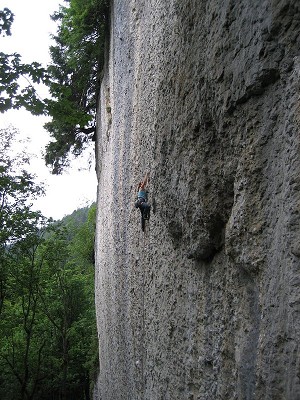
Excerpt from her tick-list:
Boulders: Pura vida 8A+/B, Krieger des Lichts 8A+, X-ray 8A, rising sun 8A, Shining 8A
Routes: Elements of addiction 8b+, Glückshormon 8b+, Minas Tirith 8b/+ Amazonas 8b, Skyline 8b (2-go), Sauron 8b, Euphorie 8b, Adam 8a (onsight)
Recently, you've had back problems, suffering from spinal disc herniation. What does this mean exactly and how does it affect your climbing?
I have a herniated disc at the fifth Lumbar vertebrae (L5/S1). The problem with this injury is that the nerves are affected, which leads to constant pain. When the injury is new, most of the disc material presses on the nerve, resulting in pain radiating out in the legs, or even numbness. But with good treatment and enough time, the body can recover again, rebuilding the disc, and one is without pain.
Climbing is actually good therapy. At the beginning, it was therapy climbing, but today it's as fun as bouldering. The end result for my attitude towards climbing has possibly even changed for the better.
When did you first experience the problem?
In the summer of 2008, I had a boulder project at Silvretta. The crux of the problem involved reaching high for an under-cling, then getting your feet up and stabbing for the same hold with the other hand. This move was probably largely responsible for my injury... But at that time, I was used to feeling sore muscles, and it didn't even cross my mind this could be something else.
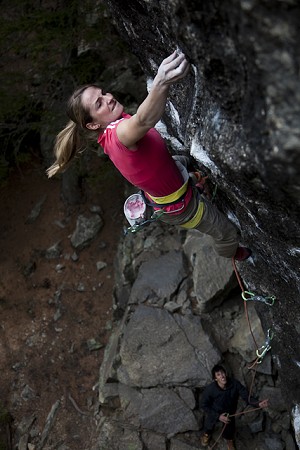
I had never had any problems with my spine, and who expects a herniated disc at 20?
On I went to Rocklands, where, initially, I climbed a few boulders without feeling any pain. Then I tried a highball and... my disc was broken...
How did you feel when you realized this wasn't something that would just go away easily?
In the beginning, it was really bad. Just to sit or stand for a long time was a problem. Climbing was out of the question. Unfortunately I began with the wrong kind of therapy, making the back worse instead of better... The fact that the injury wouldn't get any better without an extended break from climbing didn't exactly make things easier either...
For quite some time walking and swimming was on my daily schedule. Almost comical really... how injuries can force you to start from square one again.
You have, more or less, been forced to stop bouldering and switch to route climbing. How would you compare the two disciplines?
After my injury, I tried to start bouldering again. The bouldering itself.. the climbing, is not a problem. Jumping off, however, is. It's getting better though, but slowly. To go bouldering for a day or two once in a while is already totally ok, and it gets better all the time.
At the moment, and because of this I guess, I can see the whole thing in a bigger perspective. I'm actually happy that I can have as much fun, regardless of if I climb with a rope or a crashpad.
To do both has opened doors to brand new possibilities for me. I find it really cool to get up early and, quite literally, hang around on a wall for the whole day. The adventure has simply got even better.
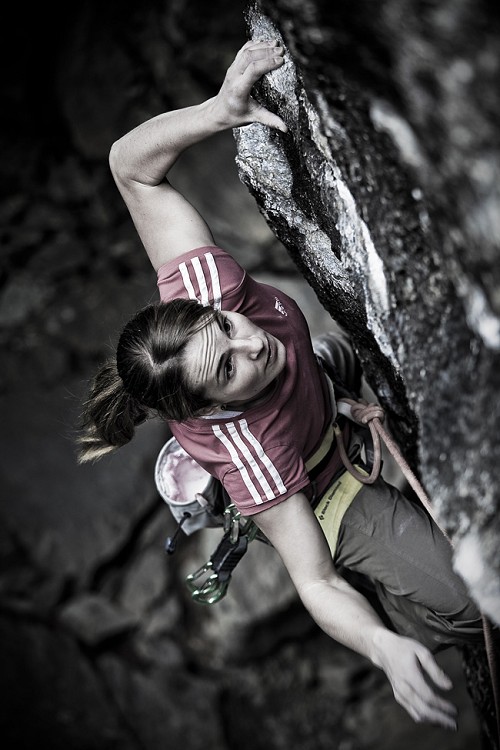
You've been very successful, climbing several 8b+'s and 8b's, but was this an easy transition to make? Is it as easy to motivate yourself and as rewarding when you succeed?
I found it rather easy actually. I was just as motivated as when bouldering. At first, and as you'd expect, I had to fight quite a lot to gain the necessary stamina, but now it is already better.
In the area where I live, there is great potential for sport climbing and there are certainly more beautiful places to climb than to boulder, so I immediately found the one or other route that got me psyched and the desire for more was, and still is, great.
Especially in the Zillertal and the Ötztal there are incredibly beautiful routes with cool rock structures. It would be a pity not to try them. I think you can motivate yourself a lot more if you combine climbing and bouldering.
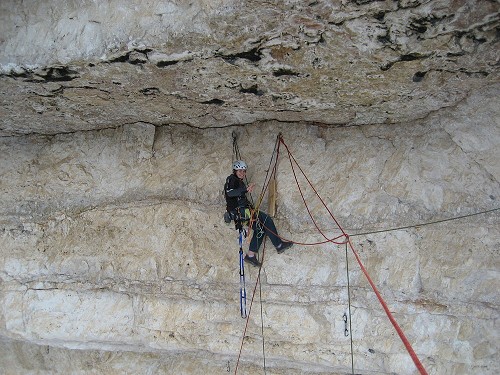
This year, you've began playing with multi-pitches. Is it true that seconding Hansjörg Auer on Pan Aroma (~8c and one of the most difficult multi-pitches in the world) was your first route? What were you thinking?!
For me it was the very first time I climbed on an alpine route. When Mr Auer asked me if I felt like seconding him on his ascent, I didn't think much about it.
Anyway, it was definitely an adventure...
Can you describe the experience?
The first two pitches were sparsely protected by pitons, but for Hansjörg, this wasn't a problem. For him, it doesn't seem to make any difference if there are bolts or pitons... (I'm sure he wouldn't agree, but that's a fact)...
In the first difficult pitch through a roof, I realized the mindboggling size of the thing for the first time, and when I saw the fixed rope, dangling in the wind far from the wall... I experienced, well... mixed feelings.
Again, my alpine experience amounted to exactly zero. Never having touched a jumar, I got a short introduction and... off I went. It was exciting to say the least.
One can learn a lot from Hansjörg. It was more than impressive to see the lightness and freedom with which he moved 5 or 6 meters above the last piton, making big dynamic moves without hesitation.
I seconded the two pitches through the roof and then the extremely wet last two pitches. Absolutely soaking wet, me more trashed than him, we stood there above what's probably the biggest roof in the Alps at the end of a fantastic day.
Again, congratulations and thanks for taking me along for the ride Hans!
Can you tell me about a couple of key moments and people that have defined you as a person and as a climber?
My brother took me to the bouldering gym for the first time, where I made my first attempts at climbing. Through Bernd Zangerl and Didi Siegl, I got to experience climbing on rock, and since then, I spent a lot of time with Bernd in various bouldering areas, like, for example Rocklands. When it comes to climbing, I think this is surely what has defined me the most.
The next key moment, was the injury, which made me change my attitude towards climbing a bit, and I can't imagine focusing on bouldering only, the way I used to, again.
Which climbing experiences have been the most rewarding for you?
There are so many moments that I wouldn't have wanted to miss for the world... For example the time at Silvretta, making first ascents there.. or the time in Ticino or Magic Wood. The time in the Zillertal, climbing on the best granite...
Right now, climbing big walls fascinates me. Arriving at the bottom of a wall early in the morning, climbing through the wall and, then, in the evening, enjoying a pizza or whatever afterward, finishing a nice day in a nice relaxed way.
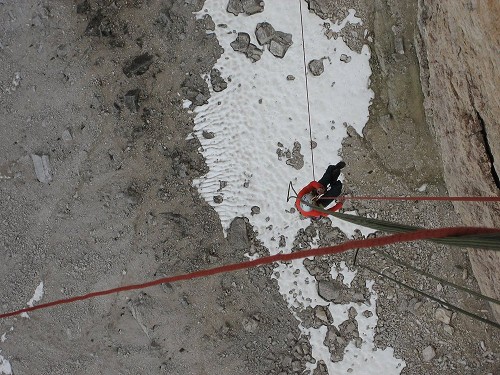
The last time I interviewed you, two years ago, you were studying at a medical technical school and would be finished relatively soon. Are you continuing your studies or do you have any plans to do so in the future?
After finishing my education, I took half a year off. Since last winter I work as an X-ray assistant in a hospital in Bludenz.
For me, variation is important and by working I have a contrast to climbing. I must say that I have a great job that allows me to be flexible and to have much free time. Currently I am very happy the way it is.
When I don't feel like climbing, I do something else. It is nice to live with climbing without the pressure to make a living from it...
What else than climbing is important in your life right now?
Health, friends, family, fun, adventure, traveling...
Any future dream projects that you feel like telling me about?
More cool multi-pitches... I want to climb a big-wall... sport climbing... new cool travels... new places... getting stronger... climbing harder... a lot more adventures...I want to see the Half Dome....:-) and I want to climb some cracks in Utah. And maybe Squamish would be a cool place to visit... so many dreams!
Thanks Babsi, and good luck living the dream!


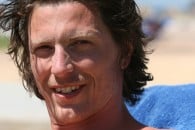



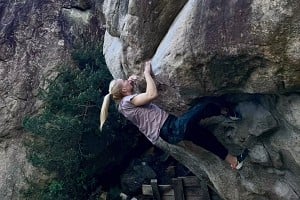
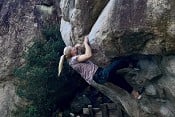



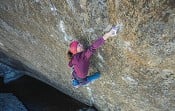
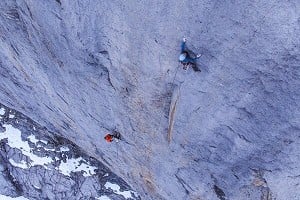
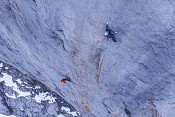
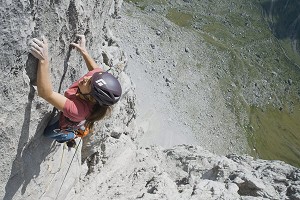
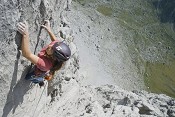
Comments